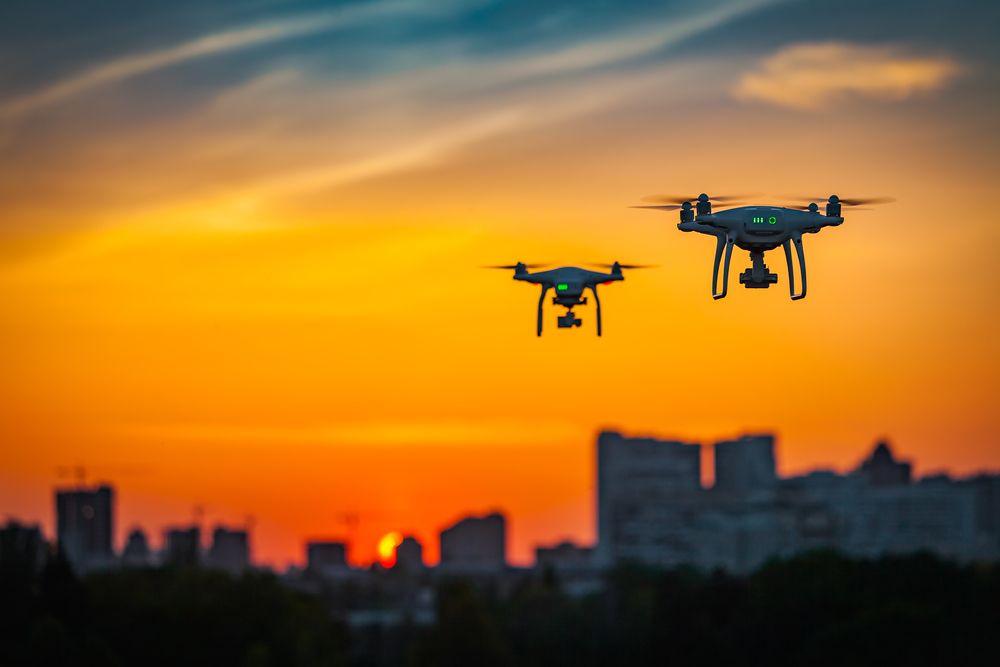Beyond the headlines: Will the Saudi attacks mark the end of drones?

The drone attacks on Saudi Arabia’s oil fields on 14 September managed to cut the country’s oil production by 50 per cent, marking the first known coordinated swarm drone attack on national infrastructure. There is still no definitive visibility on who was behind the attack and whether it was missiles or the drones or both, that caused the damage. Regardless, the strike will force regulators in the region to start taking them seriously.
Rabih Abu Rashed, managing director at Falcon Eye Drones explains the possible repercussions.
Drones, like GPS and the internet before it, were originally military-use only. But as is usually the case with technology, it became smaller and cheaper and commercially available. Now, it is in the hand of many consumers, with a new type coming out on a regular basis. The market is divided between hobby drones, “prosumers” and professional.
Drones initially were just unmanned small planes, piloted from the ground rather than onboard then they became smart enough to be able to pilot themselves and follow a predetermined route or mission. Soon we will have artificial intelligence (AI)-powered drones, where the system will itself decide in real time the best route and action to take.
There is no doubt the attack in Saudi Arabia will cause a ripple effect in the drone sector. But it won’t necessarily be a negative one. It will drive regulators to put more rules in to have better control over the market, which is a good move.
Such control would limit unlicensed, unauthorised individuals and companies from importing and using these drones. Leaving commercial companies with professional know-how to operate, resulting in a boost to the sector. To elaborate on this, a lot of companies and individuals are operating drones today without being experts in their fields which leads to poor results and deliverables, making the end-client believe that the drone industry isn't mature enough yet. When operated by professional companies, the high level of deliverables and the safe and reliable operations will lead to more repeat business, resulting in an overall push for our sector.
Initially most of the use-cases or demand for drones came from the media and production sector. Aerial photography/videography was the fastest industry to adopt drones to get aerial shots without the need to hire a helicopter. But as big business realised the benefit of drones, we saw a huge shift in market share towards the GIS (Geographical Information Systems) and inspections industries.
GIS applications such as aerial mapping/surveying, 3D digitisation and digital twin creation, gained a huge increase in popularity in the past two years, many big projects rely on drone data now for the speed and efficiency it provides. As a quick example a 10 KM² area usually need weeks to map with traditional methods but only a couple of days with a drone team, providing major savings. At Falcon Eye Drones GIS applications accounts for about 50 per cent of our business.
The other effect of the attack would be a boost to the anti-drone systems as many high-asset companies will rush to acquire this emerging technology. These devices can be installed around the perimeter of crucial infrastructures such as oil and gas, airports and military zones etc and they work in multiple ways; they can act as detectors of incoming threats giving the security forces time to react, some of these devices have a detection range of up to 50 kilometres which can provide a lot of time for a counter attack. Or they can have a defence mechanism built in such as remotely disabling the drone before it reaches its target by means of interrupting the radio frequency and the GPS signal it is receiving.
It is also very important to note that the attacks were not carried by hobbyist drones you can buy in shopping centres, not even by the commercial ones used for mapping and inspections by drone companies.
Judging by the scale of the damage and the extreme distance the drones had to travel to reach its target, it is my opinion that these were very large drones used only for warfare and only a handful of governments have access to this tech.
In a way, this should bring some comfort to the public that it isn't easy to cause so much damage with just any drone.
Irrelevant of what was used to cause this horrible act of violence, terrorism and evil will always find a way to do malicious acts against humanity. The same way they hack computers to plant viruses, use social media to corrupt minds or use trucks to ram into crowds, they will use drones to do damage and cause harm.
We should not rush to blame or ban a technology that is boosting our economy and is helping to save lives every day.
The technology has evolved to have a positive influence and effect in a lot of applications such as search and rescue, blood and medicine deliveries to remote areas with no access to good roads.
Drones also replace humans performing dangerous jobs such as inspection of high towers or going underground or into hazardous environments, massively reducing the risk to health and safety.
All in all the benefits of drones offsets any damage terrorism can hope to achieve and we need to stand together in the face of evil and work together to fight it.


